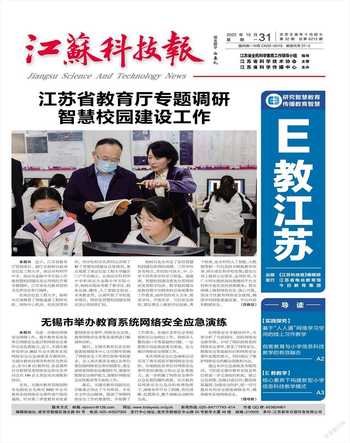Future of Education and Skills 2030: Conceptual Learning Framework(Ⅰ)
经济合作与发展组织
譯题 2030年教育与技能的未来:概念性学习框架(一)
Product by OECD(Organization for Economic Co-operation and Development)
History and background of AI in education
Review of existing evidence
The development and application of Artificial Intelligence(AI) is bringing imminent and rapid change to almost every aspect of life, with todays children experiencing a very different life to that of their parents. To prepare people for the anticipated changes to their lives, we must ensure that our education and training is tuned to the new demands of the workplace and society. The landscape we must navigate is likely to be bumpy and there will be significant challenges, not least, those relating to ethics. Fundamental to success will be unpacking our relationship with the concept of Intelligence In thinking about how AI will impact on education and what sorts of knowledge and skills future citizens will need, we therefore need to look beyond the current trends towards trying to identify the jobs and skills that the world will require to the core issue of what it means to be intelligent in an AI augmented world. However, there is value in synthesizing what experts have investigated with respect to how susceptible jobs are to computerisation, because this is an important element of the context within which we need to reconceptualise human intelligence.
A seminal report from Frey & Osborne(2013) examined 702 detailed occupations, using Machine Learning AI, in the form of a Gaussian process classifier and found that 47 percent of total US employment is at risk and that wages and educational attainment exhibit a strong negative relationship with an occupations probability of computerisation.
In a second report in 2017, in the same authors concluded that: “In short, our findings suggest that recent development in Machine Learning will put a substantial share of employment, across a wide range of occupations, at risk in the near future. According to our estimates, however, this wave of automation will be followed by a subsequent slowdown in computers for labour substitution, due to persisting inhibiting engineering bottlenecks to computerisation.”
The bottlenecks are discussed in detail:1.Limitations of mobile robotics on perceptual and manipulation tasks. 2.Creative intelligence tasks which AI and machine learning cannot currently achieve. 3.Social intelligence tasks (the challenge of real time recognition of human emotion and how to respond intelligently to these.)
However, Fadel(2014) from a roundtable of experts made 6 predictions which provide some information about the sorts of jobs that may increase in the future:1.Routine tasks will remain the most automatable, but some facets of innovation and creativity may be automatable. 2. Complete adoption of technologies generally takes longer than anticipated but may be deeper than first assumed.3. Robust occupations are those with challenges, new discoveries, new performances and new things to be learnt and shared. 4.T shaped occupations, requiring both depth and breadth will see an increase in demand. 5.A top down review will not be able to predict future job patterns. This will have to come from sector by sector analysis. 6.There are many and variable parameters which interact with one another which need to be considered in order to predict future jobs.
译文
人工智能在教育中的历史和背景
审视现有证据
人工智能的发展和应用正在给生活多方面带来快速的变化,今天的孩子们与父母有着非常不同的生活经历。为了让人们为未来预期的生活变化做好准备,我们必须确保我们所受的教育和培训能够适应工作场所和社會的新需求。未来我们必须应对的环境可能会崎岖不平,而且将面临重大挑战,尤其是与伦理相关的挑战。成功的基础条件将揭示我们与智能概念的关系。在思考人工智能将如何影响教育和未来公民需要什么样的知识和技能时,我们需要超越当前趋势,试图确定未来世界需要的工作和技能,即在一个人工智能增强的世界中被称为智能意味着什么。然而,综合专家们所调查的关于工作如何易受计算机影响的内容是有价值的,因为这是我们需要重新理解人类智能背景下的一个重要元素。
弗雷和奥斯本的开创性报告(2013)使用机器学习人工智能,以高斯过程分类器的形式,调查了702个详细的职业,发现47%的美国就业风险与工资、教育程度呈现出强烈的负相关关系以及职业计算机化的概率。
在2017年的第二份报告中,同一作者得出结论:“简而言之,我们的研究结果表明,机器学习的发展在不久的将来将使各种职业面临大量就业风险。然而,根据我们的估计,由于计算机化的工程瓶颈,计算机的劳动力替代将会放缓。”
本文详细讨论了这些瓶颈问题:1.移动机器人在感知和操作任务上的局限性。2.人工智能和机器学习目前无法实现创造性智能任务。3.社会智力任务(人类情绪实时识别的挑战以及如何智能地应对这些任务)。
然而,Fadel(2014)在一个专家圆桌会议上做出了6个预测,其中提供了一些关于未来可能增加的工作类型的信息:1.常规工作仍将是最可自动化的,一些需要创新和创造力的工作可能是可自动化的。2.完全采用技术通常比预期的要长,但可能比最初假设得更深。3.强大的职业是指那些有挑战、有新发现和需要学习和分享的职业。4.需要深度和广度的T型职业需求将会增加。5.自上而下的评估将无法预测未来的工作模式。这必须来自逐个部门的分析。6.为了预测未来的工作,需要考虑许多相互作用的可变参数。

